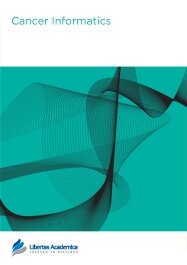

Publication Date: 23 Feb 2011
Type: Methodology
Journal: Cancer Informatics
doi: 10.4137/CIN.S6770

In the frame of the Cox proportional hazard (PH) model, a novel two-step procedure for estimating age-period-cohort (APC) effects on the hazard function of death from cancer was developed. In the first step, the procedure estimates the influence of joint APC effects on the hazard function, using Cox PH regression procedures from a standard software package. In the second step, the coefficients for age at diagnosis, time period and birth cohort effects are estimated. To solve the identifiability problem that arises in estimating these coefficients, an assumption that neighboring birth cohorts almost equally affect the hazard function was utilized. Using an anchoring technique, simple procedures for obtaining estimates of interrelated age at diagnosis, time period and birth cohort effect coefficients were developed.
As a proof-of-concept these procedures were used to analyze survival data, collected in the SEER database, on white men and women diagnosed with LC in 1975–1999 and the age at diagnosis, time period and birth cohort effect coefficients were estimated. The PH assumption was evaluated by a graphical approach using log-log plots. Analysis of trends of these coefficients suggests that the hazard of death from LC for a given time from cancer diagnosis: (i) decreases between 1975 and 1999; (ii) increases with increasing the age at diagnosis; and (iii) depends upon birth cohort effects.
The proposed computing procedure can be used for estimating joint APC effects, as well as interrelated age at diagnosis, time period and birth cohort effects in survival analysis of different types of cancer.
PDF (721.25 KB PDF FORMAT)
RIS citation (ENDNOTE, REFERENCE MANAGER, PROCITE, REFWORKS)
BibTex citation (BIBDESK, LATEX)
XML
PMC HTML
Publishing in Cancer Informatics was the fastest publication I have ever experienced and has received the highest viewing rate. So it is a great place to publish your very latest research.

All authors are surveyed after their articles are published. Authors are asked to rate their experience in a variety of areas, and their responses help us to monitor our performance. Presented here are their responses in some key areas. No 'poor' or 'very poor' responses were received; these are represented in the 'other' category.See Our Results
Copyright © 2013 Libertas Academica Ltd (except open access articles and accompanying metadata and supplementary files.)
FacebookGoogle+Twitter
PinterestTumblrYouTube